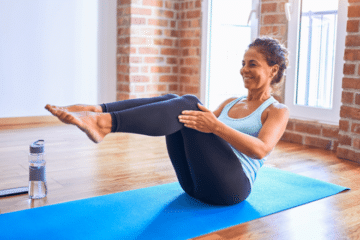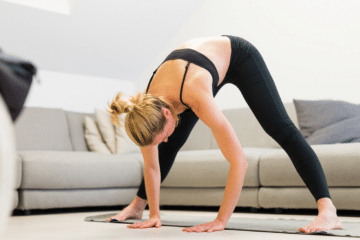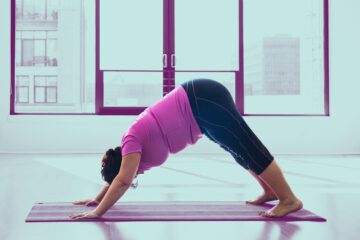Vinyasa yoga, often described as a “flow” practice, is renowned for its smooth and fluid transitions between poses. These transitions are not merely moments of movement but opportunities for mindfulness, grace, and connection with the breath.
Whether you’re transitioning from Downward-Facing Dog to Warrior I or flowing from Plank Pose into Upward-Facing Dog, mastering the art of seamless transitions is essential for cultivating a dynamic and harmonious practice.
In this article, we’ll explore the key principles and techniques behind Vinyasa yoga transitions and offer insights to help you navigate them with ease and grace.
Breath Awareness
At the heart of Vinyasa yoga transitions lies the breath. Each movement is synchronized with either an inhale or an exhale, creating a seamless flow of energy throughout the practice.
By cultivating awareness of your breath, you can harness its power to guide you through transitions with grace and fluidity. As you move from one pose to the next, allow the breath to initiate and support the movement, guiding you with its rhythm and flow.
This mindful approach not only enhances the fluidity of your practice but also deepens your connection to the present moment.
Core Engagement
Strong and stable transitions begin with a strong and engaged core. By activating the muscles of the abdomen and pelvis, you create a solid foundation from which to transition between poses with control and precision.
Engage your core muscles as you move through transitions, drawing the navel toward the spine and maintaining a sense of stability and integrity in your movements.
This not only protects the lower back but also helps to channel energy efficiently throughout the body, enabling smoother and more controlled transitions.
Alignment and Integration
Alignment is key to smooth transitions in Vinyasa yoga. Pay attention to the alignment of your joints and the integration of each part of the body as you move from one pose to the next.
Focus on maintaining proper alignment in the spine, hips, shoulders, and knees, ensuring that the body moves as a cohesive unit. Ground down through your foundation—whether it’s your hands, feet, or both—and maintain a strong connection with the earth to support your transitions.
By aligning and integrating the body mindfully, you create a sense of stability and ease that carries you gracefully through your practice.
Mindful Transitions
Transitions in Vinyasa yoga are not just about moving from point A to point B; they are opportunities for mindfulness and self-awareness.
Approach each transition with presence and intention, bringing your full attention to the sensations and experiences arising in the body and mind.
Notice any areas of tension or resistance and consciously release them with each breath. Cultivate a sense of curiosity and exploration as you navigate transitions, allowing yourself to be fully present in the unfolding journey of your practice.
Conclusion
Vinyasa yoga transitions are an integral part of the practice, linking poses together in a seamless and fluid flow of movement and breath.
By cultivating breath awareness, engaging the core, aligning the body mindfully, and approaching transitions with mindfulness and intention, you can master the art of seamless movement and unlock new depths of grace and fluidity in your practice.
So roll out your mat, connect with your breath, and allow yourself to flow effortlessly through each transition, embodying the essence of Vinyasa yoga with every movement.



